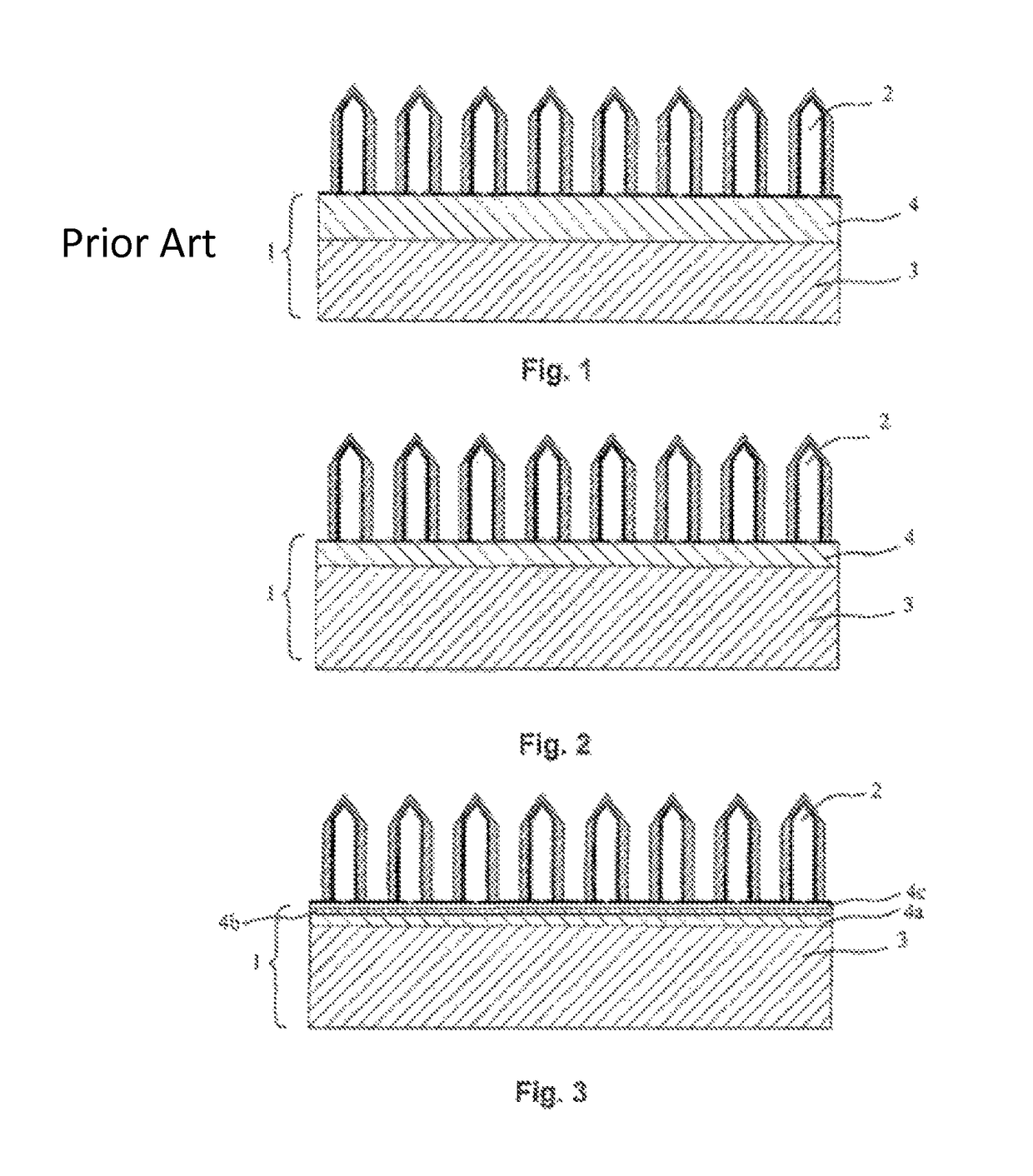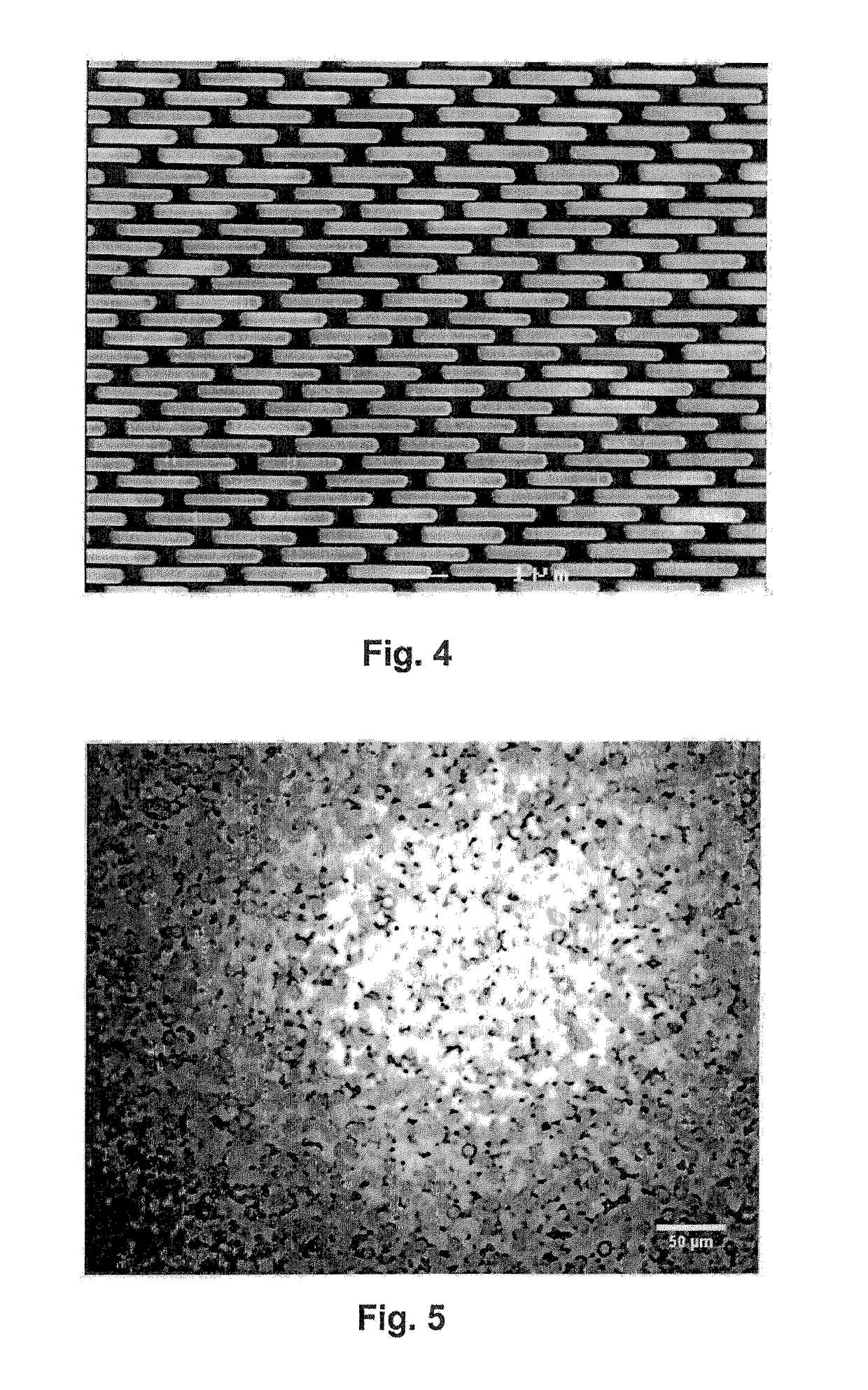Substrate with buffer layer for oriented nanowire growth
a nanowire and substrate technology, applied in the direction of nanowire devices, electrical devices, semiconductor devices, etc., can solve the problems of radically altering the thermal profile over the substrate, affecting the performance of the substrate, and unable to readily prevent cracks, so as to avoid costly and time-consuming epitaxy steps in the processing.
- Summary
- Abstract
- Description
- Claims
- Application Information
AI Technical Summary
Benefits of technology
Problems solved by technology
Method used
Image
Examples
Embodiment Construction
[0040]All references to vertical, lateral etc. are introduced for the ease of understanding only, and should not be considered as limiting to specific orientation. Furthermore, the dimensions of the structures in the drawings are not necessarily to scale.
[0041]Although the preferred embodiment of the invention in the following are described mainly in terms of nanowire light emitting diodes (LEDs) and the needs for such structures it should be appreciated that the substrates and buffer layers of the invention and the nanowire growth thereon can be used to fabricate other optoelectronic devices and electronic devices and to fulfill the needs thereof.
[0042]For LEDs nitride-based semiconductor materials are of great interest at least for the part of the device that generates the light. Typical GaN nanowire LED fabrication includes elevated growth temperatures around 1000 deg C. Substrate / buffer layer materials must be chosen according to this thermal envelope. Examples of such materials...
PUM
| Property | Measurement | Unit |
|---|---|---|
| thickness | aaaaa | aaaaa |
| thickness | aaaaa | aaaaa |
| thickness | aaaaa | aaaaa |
Abstract
Description
Claims
Application Information
 Login to View More
Login to View More - R&D
- Intellectual Property
- Life Sciences
- Materials
- Tech Scout
- Unparalleled Data Quality
- Higher Quality Content
- 60% Fewer Hallucinations
Browse by: Latest US Patents, China's latest patents, Technical Efficacy Thesaurus, Application Domain, Technology Topic, Popular Technical Reports.
© 2025 PatSnap. All rights reserved.Legal|Privacy policy|Modern Slavery Act Transparency Statement|Sitemap|About US| Contact US: help@patsnap.com



